-
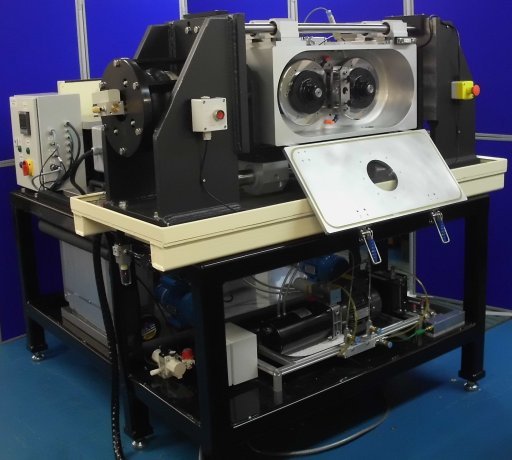
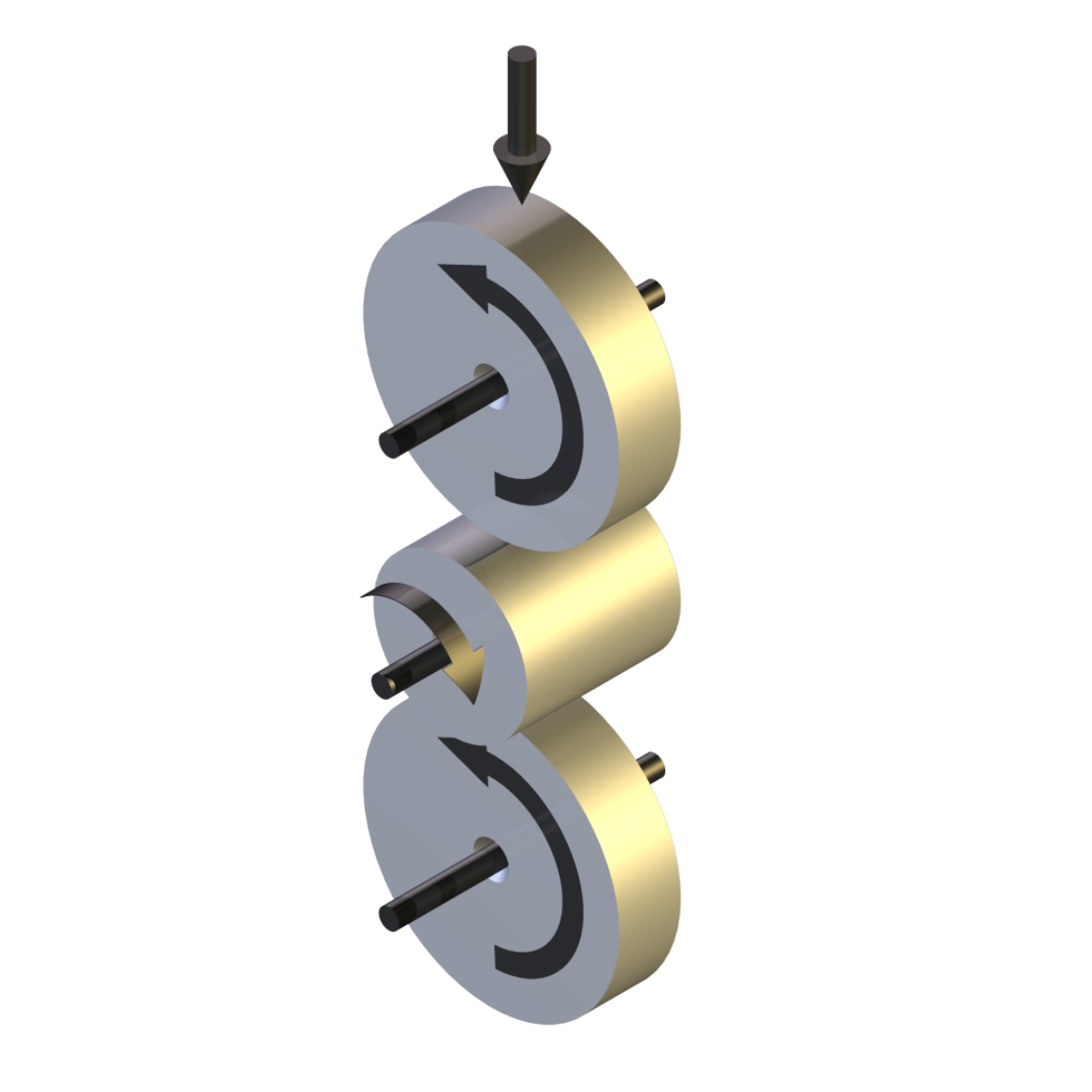
Description
The RCF 3 Rolling Contact Fatigue Machine is a modified version of the TE 73H Two Roller Machine. It provides a three roller test configuration similar to the now obsolete GE Polymet machine. Two large diameter rollers are loaded diametrically opposed against a small diameter rod specimen. In the original Polymet design, the latter was driven. In the current design, the two outer rollers are driven, allowing much higher rotational speeds to be achieved, while at the same time substantially eliminating potential slip in the roller contacts.
The machine is designed for performing rolling contact fatigue tests under conditions of elastohydrodynamic lubrication, with well filtered lubricant feed, thus minimizing the potential for adhesive, abrasive or oxidative wear or surface propagated micro-pitting; the intended failure mechanism is thus by pressure generated, sub-surface propagated, flaking or spalling.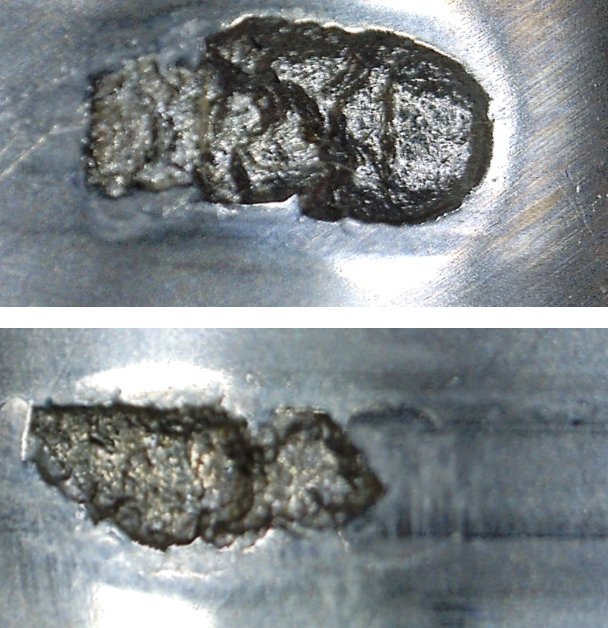
The rod specimen is reduced to a simple cylindrical roller running in rolling contact with the driven rollers. Specimens of diameters ranging from 20 mm to 50 mm can be accommodated.
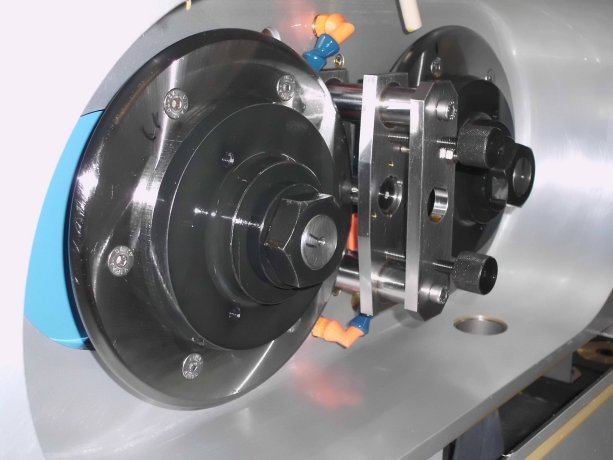
The rod specimen is carried in two deep grove ball bearings, which are subjected to no radial load. A small axial pre-load is applied with wave washers. The maximum achievable rod specimen speed is a function of the quality of the supporting deep groove ball bearings and the ability to fine tune the lubricant supply to allow operation at speeds in excess of the normal limiting speed for the given bearing. Typical operating conditions, with different sized rod samples, hence support bearings, are as follows:
Drive Roller Drive Roller Test Roller Support Bearing Reference Limiting Test Cycles per Day Diameter Speed Diameter Speed Speed Speed (million) mm rpm mm rpm rpm rpm 200 4500 20 61804 45000 45000 129.6 200 2800 20 61804 28000 28000 80.6 200 4800 30 61806 32000 32000 92.2 200 3000 30 61806 20000 20000 57.6 200 5200 40 61808 26000 26000 74.9 200 3200 40 61808 16000 16000 46.1 200 5000 50 61810 20000 20000 57.6 200 2600 50 61810 13000 13000 37.4 For high speed operation, the deep groove ball bearings must be press-fitted to the rod sample, with the tolerances adjusted to ensure the correct bearing operating internal clearance. Other than the press-fit, no other means is provided for locating the rod sample within the bearings, thus removing the requirement for circlip grooves in the rod samples. The bearings are treated as consumable items and used once only.
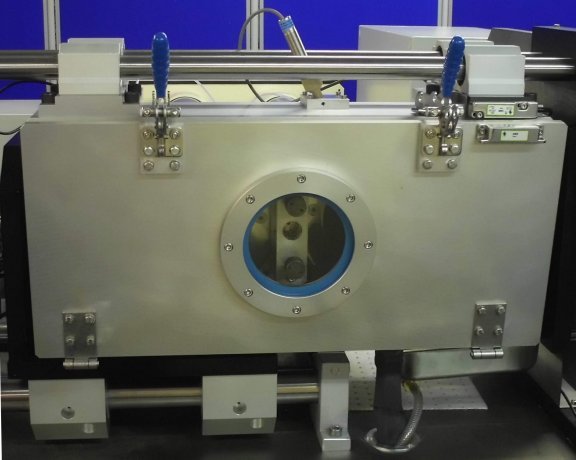
The “race-way” surface temperature (the running surface of one of the driving rollers) and the rod sample end-face surface temperature are monitored by pyrometers. A vibration sensor with adjustable level trigger circuit is provided for stopping the machine at the on-set of rolling contact fatigue.
Load is applied by means of a servo-controlled pneumatic bellows with force transducer feedback. One of the driving roller assemblies is mounted on a linear slide and is indexed, under load from the bellows, into contact with the rod specimen, also mounted on the linear slide, and hence into contact with the fixed driving roller.
The drive system comprises an a.c. vector motor and drive with encoder feedback. The motor output incorporates belt drives to two lay-shafts, each connected by high speed cardan shafts to the driven roller spindle assemblies. The spindles are electrically insulted and provided with slip rings to allow electrical contact potential measurements to be performed in order to detect the presence or otherwise of thick lubrication films.
Lubricant supply to the test assembly and roller spindles is provided by separate service modules.Control and Data Acquisition
Control and data acquisition are implemented via host PC running COMPEND 2020 Windows compatible software, in conjunction with a Phoenix Tribology USB micro-controller interface.
Automatic control is implemented via user programmable test sequences. Manual control is implemented using on screen toggles. Data is stored to hard disc in either .csv or .tsv file formats. -
Technical Specifications
Contact Configurations: Flat Roller on Flat Roller (Line Contact) Flat Roller on Crowned Roller (Elliptical Contact) Maximum Load: 21 kN Loading Rate: 50 N/s Temperature Range: Ambient to 150°C Test Roller Diameter: 20 mm to 50 mm Driving Rollers: Diameters: 200 mm to 250 mm Maximum Speed: 6,000 rpm Vibration Sensor: Piezo-electric type with adjustable threshold sensitivity and cut-off time Interface: Serial Link Interface Module Software: COMPEND 2000 Motor: 4 kW a.c. vector motor, 2048 ppr encoder, force vent Controlled Parameters Motor speed Applied load Lubricant inlet temperature Test duration Recorded Parameters Motor speed Applied load Lubricant inlet temperature Race-way temperature Rod Sample end-face temperature Vibration sensor output Electrical contact resistance Services Electricity: 220/240 V, single phase, 50/60 Hz, 7.5 kW Clean, dry air: 4 cfm at 8 bar (120 psi) Mains water and drain: 10 l/min (typical) -

